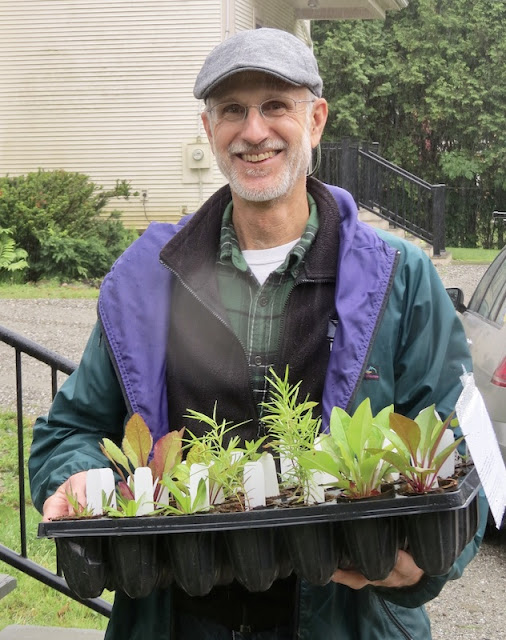Photos from the conclusion of the 2022 plant sale to benefit the Community Center in Jericho.
Special thanks go out to Jen Greenwood for meticulous administration and communications. Kudos to Jane Sorensen for growing great native plants.
Thank You to all who purchased plants. We wish you a happy growing season!
The sale contributed $279.00 to the Community Center.
The Community Center in Jericho and Bernie Paquette bring you the 2022 Community Plant Sale.
Five plant collections for different sun/soil conditions, utilizing mostly Vermont native plants, each offered in two tray sizes, 9 plants or 21 plants. All grown in Fairfax at River Berry Farm.
See Full Details at Community Pollinator Plant Sale.
Mail checks to Community Center in Jericho, P.O. Box 1018, Jericho, VT 05465
Includes a new Soft Landings* offering (See definition of Soft Landings below).
This is a benefit sale for the Community Center in Jericho, Vermont. The sale is open to everyone in Vermont.
River Berry Farm is an organic vegetable and small-fruit family farm located on the Lamoille River in Fairfax, Franklin County, VT. We are about 1/2 hour from Burlington, 20 minutes from Saint Albans, and Cambridge, VT. We sell plants for pollinators at the farm in Fairfax, VT, from June 1st to the end of September. Visit our website at River Berry Farm or read our Guideline for Selecting Plants and Planting a Pollinator Garden at Northeast Pollinator Plants.
The Community Center, is located at 329 Browns Trace, Jericho, VT. provides a setting for a variety of activities such as parties, meetings, and classes and hosts fun events that strengthen a sense of belonging to and caring about our community.
Bernie Paquette is an advocate of habitat biodiversity, planting a mixture of perennials, shrubs, and trees that support pollinators and the overall web of life of our community. Biodiversity enhances ecosystem function. Planting native plants help ensure the plants will do well on their own requiring less care such as watering and fertilizing. Native plants are more likely to support our local pollinators than would non-native plants. Habitat restoration is an action we all can take on to help the soil, plants, insects, and other life restores themselves.
*NEW Soft Landings offering (Option #4): Soft landings are diverse native plantings under keystone trees or any other regionally appropriate native tree. These plantings provide critical shelter and habitat for one or more life cycle stages of moths, butterflies, and beneficial insects such as bumble bees, fireflies, lacewings, and beetles. In addition to plants, soft landings also include leaf litter, duff, and plant debris.
Planting tip for any potted plants: Break up the bottom third of the plant plugs to help ensure the roots grow out and do not continue in the shape of the container they were in.
Spacing of plants, guidance from Jane Sorensen.
I recommend 4 s.f. per plant, 2’ apart, so 21 plants would need 84 s.f.
You can certainly plant closer, as close as 1 s.f. per plant, which would give a more meadow effect and then only need 21 s.f. So a big range.
Again, my preference is 2’ apart to allow the plants fully express their form.
But, the plants will grow just fine much closer, and the pollinators really won’t mind either spacing or anywhere in between!
Go Botany to determine if a plant is native to Vermont





























No comments:
Post a Comment